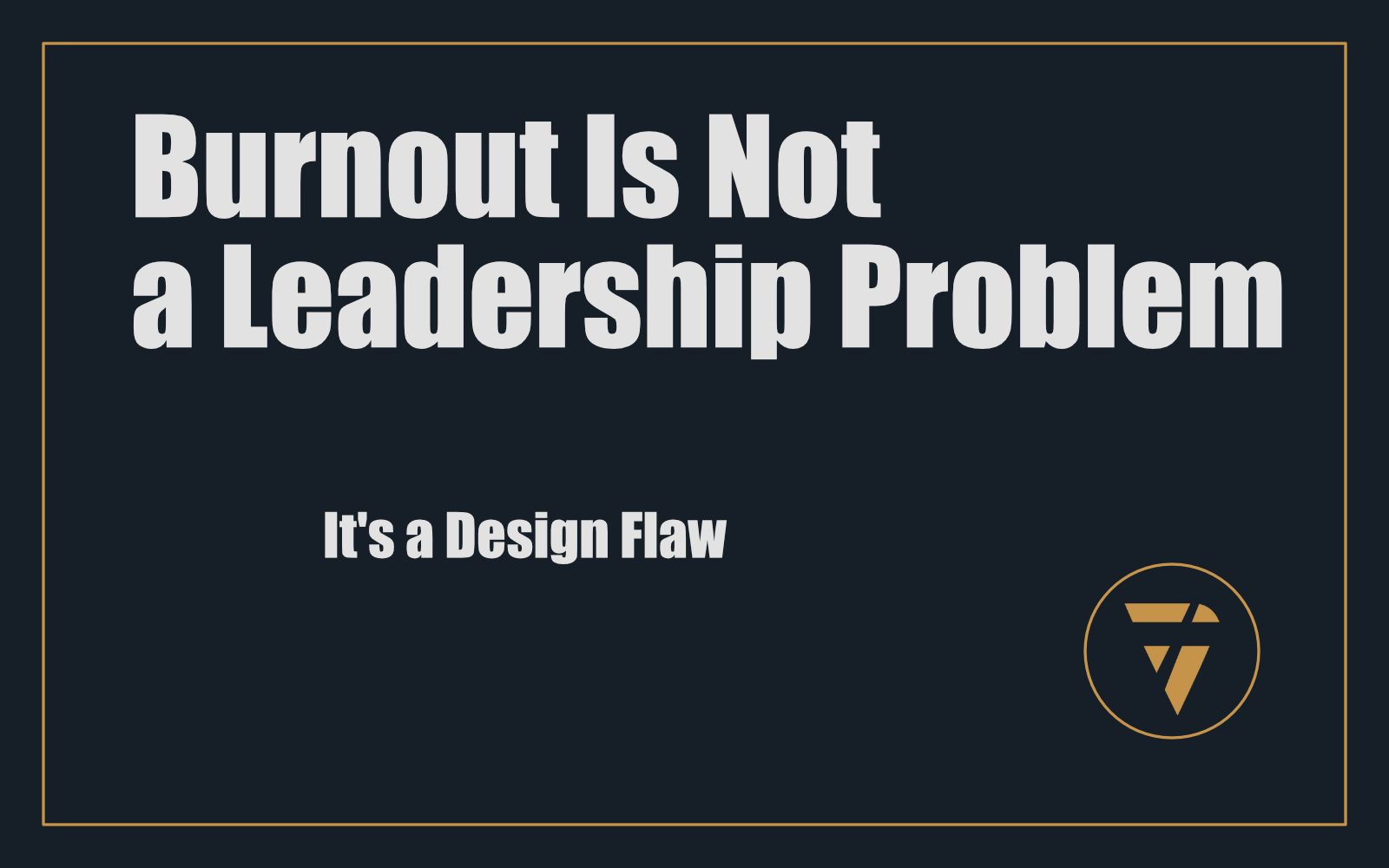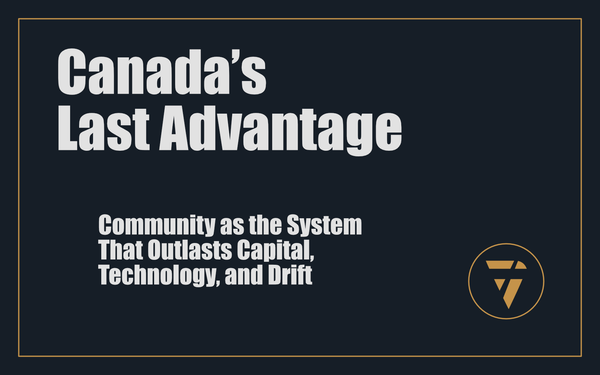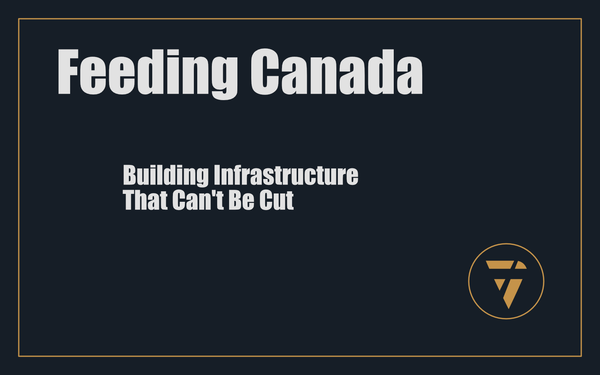Burnout Is Not a Leadership Problem

It’s a Design Flaw
You’re exhausted.
But you still show up.
You still carry the weight.
Because no one else will.
You’ve convinced yourself this is what leadership feels like... perpetual strain, perpetual sacrifice, perpetually five minutes behind.
Let me offer you something dangerous.
A possibility you’re not allowed to say out loud:
You’re not burned out because you’re weak.
You’re burned out because your system is broken.
The Failure of the Narrative
We’ve done a spectacular job of making burnout a personal issue.
The rhetoric is everywhere:
- Set better boundaries.
- Practice gratitude.
- Do more breathwork.
- Learn to say no.
None of these are wrong.
But all of them are inadequate.
Because burnout doesn’t start in your calendar or your mindset.
It starts in your infrastructure.
When your business relies on heroic effort just to function, you’re not scaling, you’re surviving.
And survival is the slowest way to die.
What Burnout Actually Is
Burnout is what happens when a system offloads its structural dysfunction onto its most responsible people.
It’s not a failure of will.
It’s a failure of design.
You’re tired not because you’re doing too much, but because the architecture around you is doing too little.
We’ve worked with founders pulling eight-figure revenue who still act as the decision bottleneck in every department.
We’ve seen executive teams optimized for optics, not ownership.
We’ve seen cultures built to perform, not to function.
This isn’t leadership fatigue.
This is organizational pathology.
Enter the DSMO: Business Therapy Begins with Diagnosis
This is why I built the DSMO—The Diagnostic and Statistical Manual for Organizational Disorders.
Not as a gimmick. As a tool. As a lens. As truth.
This is what I use.
The DSMO classifies, defines, and treats organizational dysfunction the way clinical systems address psychological health.
Because companies, like people, have patterns.
And if those patterns go unchecked—they break down.
Some of the most common structural disorders we diagnose through Business Therapy:
1. Leadership Displacement Disorder
You’re the fallback plan for everything.
- There’s a “lead” for every department—but no one owns end-to-end consequence.
- Decisions escalate unnecessarily.
- The org charts look right, but the flow of accountability is broken.
Outcome: You burn out. Everyone else performs. Nothing actually scales.
2. Cultural Fragmentation Syndrome
The words sound good. The behaviours don’t match.
- Values exist in documents, not in rituals or metrics.
- Internal trust is low—but hard to prove.
- Feedback dies before it surfaces.
Outcome: Teams perform compliance, not commitment. You lose high performers quietly.
3. Systemic Execution Incoherence
You’re working hard in every direction—but none of them align.
- Strategy lives in keynote decks.
- Operations lives in survival mode.
- Revenue teams are chasing symptoms, not systems.
Outcome: Growth stalls. Not for lack of effort—but for lack of structural clarity.
The Truth About Burnout
Burnout is not the cost of ambition.
It’s the signal that your structure cannot hold your vision.
And here’s the paradox:
You’ll never meditate your way out of architectural failure.
Burnout won’t go away with rest.
It goes away when the system finally starts doing its job—so you don’t have to do all of it.
What Business Therapy Actually Looks Like
We don’t offer motivation.
We offer reconstruction.
Through the DSMO, we rebuild:
- Decision architecture that distributes weight across the org.
- Accountability systems that create ownership without overreach.
- Strategic filtration that replaces noise with focused execution.
- Cultural protocols that bind teams in behaviour, not buzzwords.
We don’t ask your team to be more resilient.
We design your system so resilience isn’t necessary in the first place.
You Don’t Need a Vacation. You Need a New System.
If your leadership feels like a performance you can barely keep up…
If your team’s exhaustion is becoming your new baseline…
If you’re holding up a company that should be holding you…
This is your call.
Not for therapy. For treatment.
Not for motivation. For structural repair.
You are not the problem.
But you are responsible for fixing it.
That’s where I come in.
Let’s rebuild. Quietly. Precisely. Permanently.
This is what I’m working on. Tell me what you think, I enjoy the conversation! Subscribe and follow the work in real time.
Thanks!
B

Burnout isn’t a mindset issue.
It’s your company’s way of telling you the system is broken.
You’re not tired because you’re weak.
You’re tired because the architecture still runs you.
PS -






